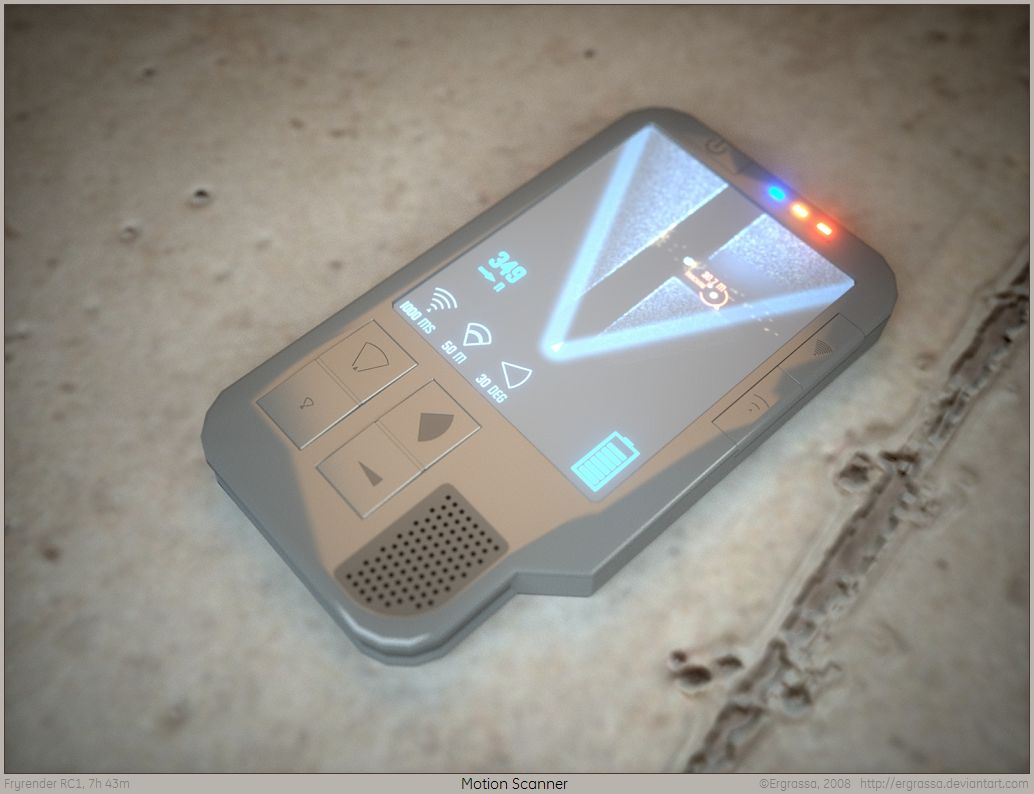Jorus Merrill
is mek bote

http://ergrassa.deviantart.com/art/FRY-Motion-Scanner-102716706
Intent: To make something cool as a natural extension of canon. To provide non-Force-sensitives with a reasonable and non-directional way to detect Force users over short distances, as if using a Geiger counter.
Development Thread: No
Manufacturer: Silk Holdings
Model: QQ-C1R4 “Lightbringer” Sensor Node
Affiliation: Levantine Sanctum
Modularity: No
Production: Limited
Material: Thaissen crystal, lightmeters, minimal computation capacity, duraplast casing
Description: Thaissen crystal from Mimban, when encased in a Force detector, is used to give an idea of how powerful in the Force a subject is or could be. The Lightbringer cannot accurately function like a Force detector, in the sense of evaluating a subject’s Force sensitivity. Instead, it sacrifices clarity for range. Rather than give a composite idea of a subject’s level of Force sensitivity, the Lightbringer encases a long, thin thaissen crystal inside a sealed compartment. Highly sensitive lightmeters allow single photons to be captured. Any interruption of the perfect darkness within the compartment is measured, no matter how minute. The thinness of the crystal both allows the machine to be portable, and, much more importantly, maximizes clarity of light emissions from the crystal’s heart, comparable to a thin Force detector paddle. Effectively, the Lightbringer functions as a Geiger counter for Force-sensitives.
The sensor’s effective radius is quite small, and its margin of error is relatively large. The reading is displayed raw, though amplified, as well as in numerical values of percentage. As Force disturbances and presences vary widely, a 5% signal might indicate a Master fifty metres away -- the outer limit at which the margin of error makes results very dubious -- or a much smaller or muffled Force signature five metres away. Thus, knowing the power and condition of a nearby Force user would allow estimation of distance, but not direction. The lightmeter reading is not, in any sense, directional. Direction must be triangulated. Also, if nearby Force users know that the Lightbringer is in use, the sensor can be jammed, as it has no way to differentiate between multiple presences or significant uses of the Force. This would cause difficulties for triangulation if two or more Force users were present.
By any objective historic standard, the Lightbringer’s effect is very crude, more akin to a Geiger counter than even early radar. For a helpful second opinion, however, a basic motion sensor is included with a range of fifty metres, twenty percent of the motion sensor range of a QQ-M4T-5U Scanpack.
As thaissen crystals glow blue in the presence of the Light Side and red in the presence of the Dark Side, the Lightbringer can determine Force alignments within a certain margin of error, and in a very simplistic way. Neutral Force users, Lightsiders giving in to their anger, or Darksiders in a moment of serenity, have been known to register as both blue and red simultaneously, either oscillating or as a faintly indigo or violet glow -- another example of the device’s unreliability and imprecision. Then again, the subjects of measurement are rarely precise either.




